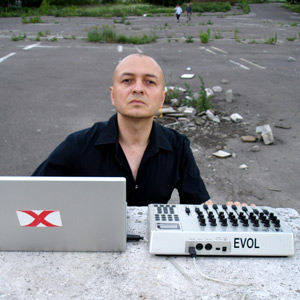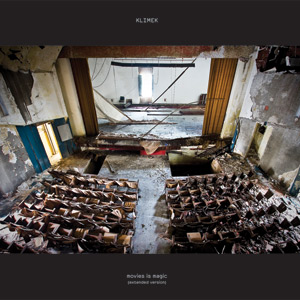
Sebastian Meissner works as a media artist using sound, video and photography. Employing multiple artistic personas (Autokontrast, Autopoieses, Bizz Circuits, Klimek, Open Source, Random Industries, Random_Inc), his works negotiate urban/cultural/social scenarios, randomness, historical music archives and strategies of networking. He works with computer music sources, sampling and moving photography - assembling their interrelation within geographic/historical/political discourses.
Over the years Meissner's works have been widely presented at festivals and by institutions such as Transmediale (D), Podewil (D), Portikus (D), Schirn Kunsthalle (D), Festival for Jewish Culture (PL), Goethe Institute Buenos Aires (AR), Goethe Institute Ramallah (PAL), Goethe Institute Almaty (KZ), Sonar (ES), Mutek (CA), OK Centrum (A), Hazira Performance Center Jerusalem (IL), Kulturhuset Stockholm(S) and Forsythe Ballet (D).
Meissner studied Education, Sociology, Psychology and American Cultural Studies at the Johann Wolfgang von Goethe University in Frankfurt/Main (D). In recent years he has participated in workshops, seminars and lectures for Barents Spektakel, Kirkenes (NO), Goethe Institute Ramallah (PAL), DJ-School Of Contemporary Music, Tel Aviv (IL), Internationale Sommerakademie, Mousonturm Frankfurt (D) and International School of New Media, Luebeck (D).
Klimek - Dedications - Anticipate 004
released November 2007 - CD / digital
Throughout his career, Sebastian Meissner has explored a range of terrain under several guises (Random_Inc, Bizz Circuits, Autokontrast, and others), recorded for numerous, highly regarded labels (Mille Plateaux, Kompakt, Sub Rosa, and many others) and exhibited his work in several formats and venues. Whether his material takes the shape of photography, music or multi-media installations dealing with social, cultural and political issues of identity and geographic space, Meissner's work doesn't sit still, but hovers in-between as a means of painting a larger picture which can't be achieved in a single piece or mode of production. With Dedications, his newest release under the Klimek moniker, Sebastian Meissner presents his most personal album to date, and brings together a variety of personas, themes and influences that permeate his extensive work in different mediums, and under different pseudonyms.
Displayed in both overt and less tangible terms, Meissner uses these dedications to communicate themes of spatial, geographical, historical or ideological distance, and the bridging of said distance. Meissner's compositions manage to subtly express these multi-faceted connections while also existing as discrete musical pieces that hold up in their own vacuum. Both expansive and miniature in its scope and presentation, the album retains a musical depth of field while distilling songs down to the traces of what is most resonant - shedding anything extraneous in favor of pure, textured musicality, which, through the use of digital techniques, feels physical and handmade. Guitar, piano, and various other string and percussion instruments are pulled and flexed and drawn out into new forms and colors. These dense, restrained compositions feel like the stand-alone score to a non-existent film, as they balance overtly melodic themes with crisply warm production and a measured sense of timing - leaving Meissner's already developed sonic thumbprint while continuing his world-view exploration with an emotional sense of immediacy.
As is evident from a glance at the track listing, each title explicitly lays out his reference points. Though some are well known figures (Marvin Gaye, Steven Spielberg) and others are less so (a Russian ship worker named Vladimir Ivanovich), the connections are ones that hold specific conceptual meaning for Meissner. Consequently, while these threads are often musical in nature and act as a means of folding time or space (Mark Hollis, singer/songwriter for the band TALK TALK and classical composer, Giacinto Scelsi), in other instances they are a direct mental line between non-musical figures that are of special significance in Meissner's consciousness (his grandmother, Zofia Klimek, and the photographer Gregory Crewdson).
This ability to unify abstractions of both collective and personal cultural figures, while allowing them to remain separate and different aspects of a longer view, is an example of the delicately balanced themes at the heart of Meissner's music, work and life. These converging relationships can be represented in something as tangled as his connections between a musician, the consequences of international shipyard regulations and sub-zero field recordings, or in something as simple and concrete as splitting the album into two parts - an eight song album and a four song limited edition CD which extends and continues the release. While the formats of the album are separate objects with tangential channels of distribution - like the figures Meissner dedicates - they are also connected as related layers of the greater and more complete whole.



